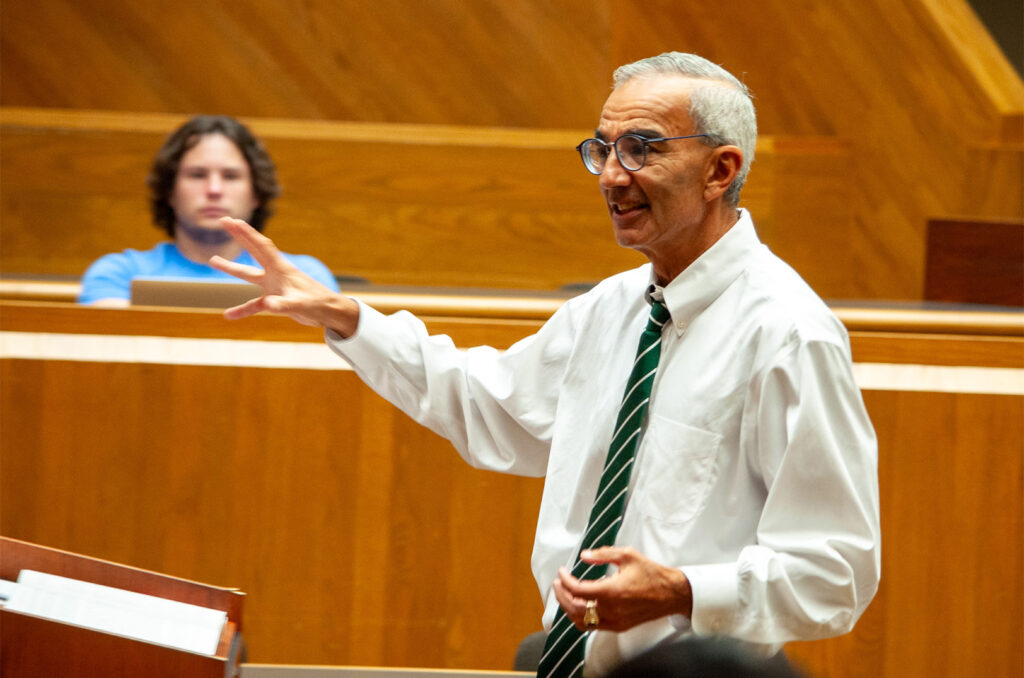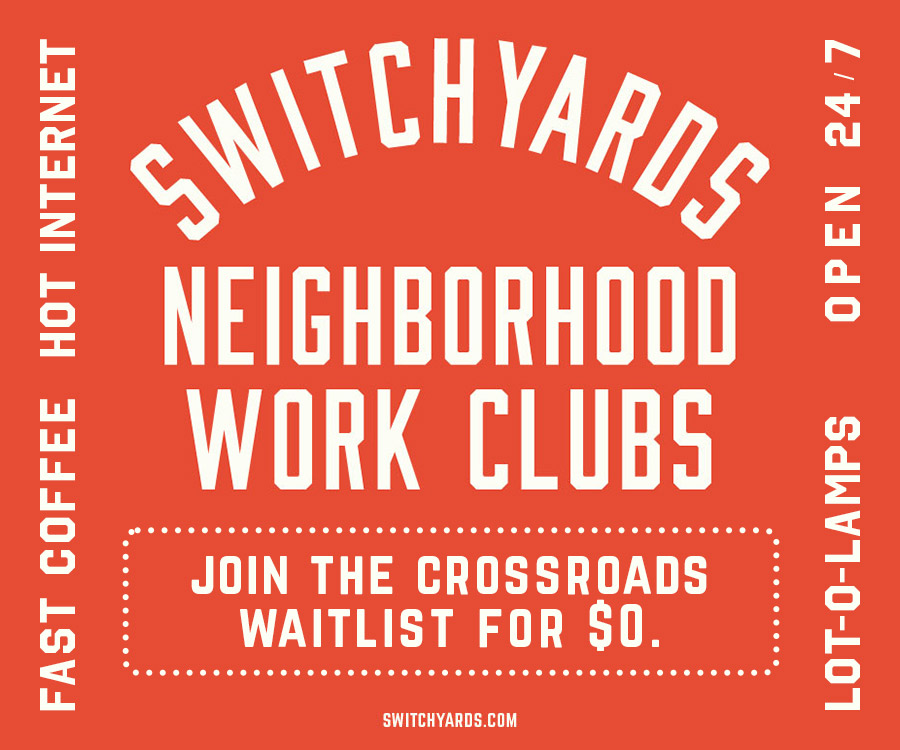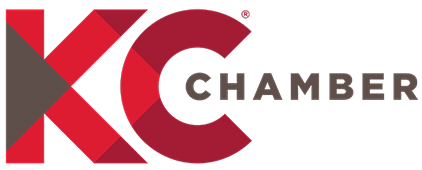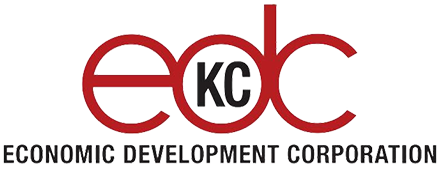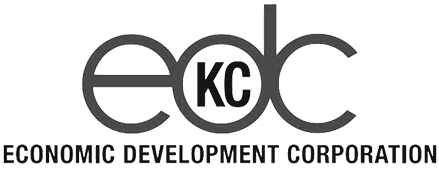An enthusiastic smile spreads across Katie Mabry Van Dieren’s face as three small groups of new customers flow into her Brookside Plaza shop — a space filled as high as the Shop Local KC owner can reach with colorful, off-beat, and functional goods and gifts from Kansas City makers.
“We smelled something wonderful from outside and had to find it,” one woman immediately tells Mabry Van Dieren, who quickly directs the inquisitive young couple to a nearby soy candle by the local brand b.e. nurtured.
But amid the bustle of the holiday shopping season — unpacking, selling, and shifting makers’ stock between her two retail spaces in Brookside and at Crown Center; organizing and executing the Holiday Swing maker fair at J. Rieger & Co.; and handcrafting her own custom floral design products — Mabry Van Dieren’s smile fades slightly, reflecting dread for an upcoming date that falls about a month after this holiday rush comes to a close.
Jan. 20: the date returning President Donald Trump says he’ll enact sharp tariffs — an economic tool the re-elected leader says he plans to use to place a tax on items imported into the United States from other countries.
“Tariffs mean prices for goods will go up,” Mabry Van Dieren said frankly, acknowledging details about Trump’s plans have been inconsistent, compounding uncertainty.
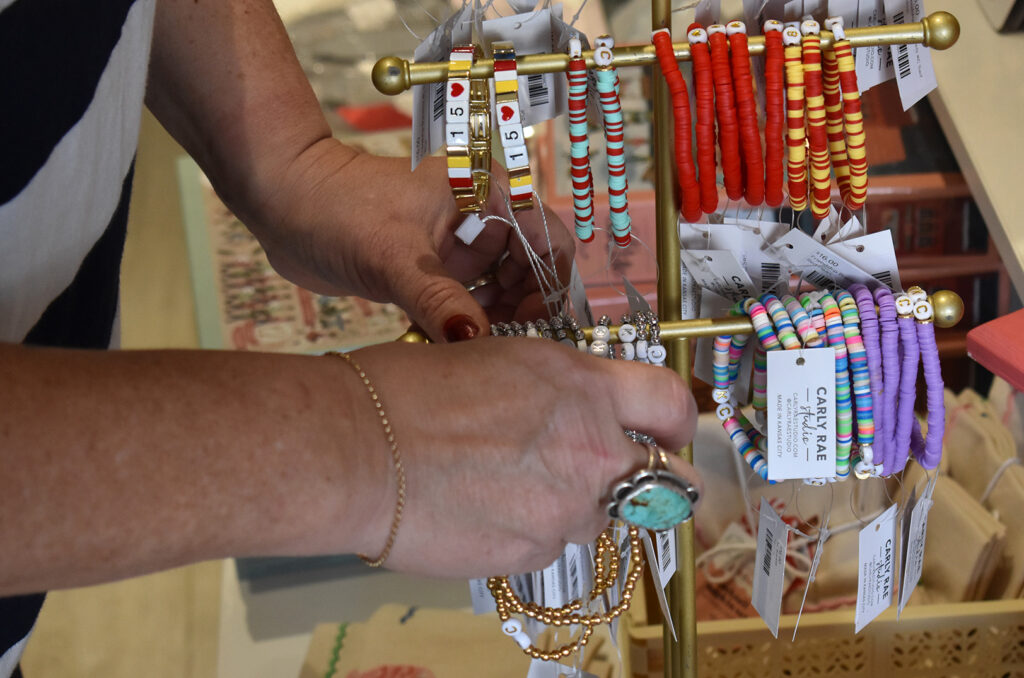
Katie Mabry van Dieren adjusts products between customers at Shop Local KC’s Brookside Plaza location; photo by Tommy Felts, Startland News
The president-elect has referenced new tariffs ranging anywhere from 20 percent to 200 percent; targeting all imports and at times seeming to specifically focus on applying tariffs to countries like China, Mexico and Canada.
“A lot of these makers, I mean … it’s not like crude oil coming from Canada is going to affect the makers, but it is going to affect their supply,” said Mabry van Dieren, who also founded The Strawberry Swing Indie Craft Fair, along with Shop Local KC.
“So, I’m looking around my store right now, and I see an ornament, and I know that the maker bought the ceramic base of the ornament probably from China, unfortunately, because it’s cheaper to buy it from China than it is made here in the USA,” she explained.

Local makers’ products on display at Shop Local KC’s Brookside Plaza location; photo by Tommy Felts, Startland News
“The blank ornament — they’re going to then use their printer to print their design on it here in the States. If that blank ornament is subject to a tariff when it comes into the States, then the maker is going to pay more for it. So, they’re going to up the price of their product. I mean, it’s basic economics, right?”
Candles from b.e. nurtured — the scents from which flowed throughout Mabry van Dieren’s shop — already feature soy wax poured into a U.S.-made glass tumbler, but not every maker can source every component of their wares domestically.
Certain products — pottery blanks, twine, specialty papers, for example — are too basic and would cost too much to make with American labor and then still be sold to makers at an affordable price, she said.
“It’s a recipe for recession,” Mabry van Dieren said bluntly.
What exactly is a tariff?
The straightforward answer is that a tariff is a tax on imported goods. Soy beans or solar panels — anything that’s imported from overseas could face a tariff.
Say a company wants to import solar panels from overseas; if those panels cost $100 a piece, and the tariff on them is 10 percent, that means there is a 10 percent tax or additional charge of $10 on each panel. Import 10 panels? Pay $100 in taxes to do so.
The tariff is paid by the importer — the U.S.-based company, in this case — to the U.S. government.
Let’s get specific
Trump’s 2024 presidential campaign site’s platform page does not use the word tariff explicitly, and it only appears once on his “issues” page. The term also only appears twice in a “2024 GOP Platform Make America Great Again!” document found via the site.
The president-elect, however, made enacting tariffs a key part of his campaign strategy when appearing at rallies and in interviews. In September, for example, Trump proposed “a 60 percent tariff on goods from China — and a tariff of up to 20 percent on everything else the United States imports,” according to PBS News.
He has also threatened specific corporations, including John Deere. That manufacturer could face a 200 percent tariff for anything it hopes to import from potential manufacturing sites in Mexico. Around the time of his John Deere comments, the president-elect suggested a 100 percent tariff on anything imported from Mexico.
But in his trademark style, Trump’s tariff percentages have changed at the speed of his social posts. The Harvard Business Review is reporting new tariff percentages as of early December — “25 percent tariffs on goods imported from Canada and Mexico on Day 1 of his presidency.”
Trump himself emphasized the tax “on all products coming into the United States, and its ridiculous open borders,” saying the move is needed to force the United States’ closest neighbors to combat the “thousands of people pouring through Mexico and Canada, bringing crime and drugs at levels never seen before,” despite violent crime being down under the Biden Administration.
RELATED: Trump tariff threat puts a strain on Canada-Mexico ties
And those threats already are causing international destabilization — intentional or not — as Canadian leaders grapple with how to respond. On Monday, the country’s deputy prime minister, Chrystia Freeland, resigned because of disagreements with Prime Minister Justin Trudeau over the tariffs.
RELATED: Trump’s tariffs pressure Canada, but sealing the world’s longest land border isn’t easy
Trump tariffs: The sequel
This isn’t Trump’s first presidency, nor his first go-round with tariffs. His previous term sparked what the media dubbed “the Trump-China Trade War.”
According to FRONTLINE, Trump — claiming the Chinese were guilty of intellectual property theft and citing the nation’s trade deficit with China — initiated a trade confrontation with China in 2018. He chose to implement “a 10 percent tariff on Chinese aluminum, a 30 percent tariff on solar panels and electric vehicles, and a 25 percent tariff on steel and nearly everything else made in China.”
The goal? Reduce dependence on China, encourage reshoring of manufacturing, and lower prices for American consumers.
What was the outcome?
Researchers said the first round of Trump tariffs actually impacted U.S.-based importers and American consumers the most, according to the Harvard Business Review, and American manufacturing jobs did not come back to the U.S. as Trump pledged.
Most of these Trump-era tariffs extended into the Biden Administration, however, and President Biden in June actually levied an additional $18 billion of Chinese goods, including semiconductors and electric vehicles, for an additional tax increase of $3.6 billion, according to Tax Foundation.
Start thinking about Plan B
U.S. companies facing the impacts of increased tariffs under Trump will likely have two primary options, said Raj Bhala: Pass higher costs on to the consumer — as Mabry van Dieren fears — or buy less from overseas producers in places like India and China.
“Well, the producer may say, ‘no, I’m not going to accept less revenue and actually I’m going to start diverting shipments away from the U.S.,” explained Bhala, an international trade law expert and the Brenneisen Distinguished Professor at the KU School of Law. “Trade diversion is an effect of tariffs. We’re already seeing that in agricultural markets with soybeans and other primary crops.”
“Now, U.S. producers of soybeans who compete in those markets are facing increased competition in those third countries because now they’re not the main exporters from Kansas to Argentina or Brazil. They’re going to face competition from China … in markets in other countries in which we had previously enjoyed a substantial market share.”
Overall, Bhala said, Trump’s proposed tariffs “would be the biggest revolution in American tariff policy in almost a hundred years. Because you’re hitting everybody. You’re targeting China, and you are also destroying basically our most precious free trade agreement with NAFTA.”
“And if you’re the government, if you’re Douglas County or Jackson County or KCMO and Mayor Q, you’ve got to think about where you’re procuring your goods from,” he added.
Bhala also noted many workers in tech and industries seemingly unrelated to importing goods and equipment are at least partly dependent on foreign markets for their jobs.
“They may be working for (an international) company that’s a big investor in the U.S. … Well, we could be the subject of retaliation… So everyone should be very concerned about and think through where they are in the global supply chain,” he said. “What is their individual position in the world trading system? And then what’s their vulnerabilities? And then start thinking about Plan B.”
“It’s not like he’s saying this is just on clothing and just on the electric vehicles and just on solar panels, it’s literally everything. There’s not one thing which in theory is going to escape these tariffs.”
How tariffs could boost Chinese tech
Just as Canada is struggling to respond to Trump’s proposals, other countries are unlikely to sit by and wait while the U.S. imposes new taxes on them, agreed John Horn, Professor of Practice in Economics at Washington University in St. Louis.
“We know that the tariffs will almost certainly lead to tariffs from other countries in response, and that is a challenge because it presents the potential that President Trump would decide to show that he’s even tougher and raise tariffs further, which could lead to a trade war,” Horn reiterated.
“We don’t really know how much other countries will just say ‘fine, post tariffs on us. We’ll just trade with other people.’ Tariffs could accelerate what a lot of people are talking about as two camps, a China camp and a U.S. camp in terms of power trade flow,” he continued. “China could use it to their advantage and say, ‘Are you tired of all these threats of tariffs from the U.S.? We won’t threaten you with these tariffs and come trade with us.”
“And that could open up extra markets for (China) so they don’t have to rely on the U.S. That could also advance some of (China’s) cutting-edge technologies that they want to grow in the future. So they’re bought from China instead of the U.S., even if they’re not (buying from the U.S.) right now.
“I don’t think there’s anything that’s purely targeted to Missouri or to Kansas. I think … that every industry … is going to face these 60 percent tariffs. It’s not like he’s saying this is just on clothing and just on the electric vehicles and just on solar panels, it’s literally everything. There’s not one thing which in theory is going to escape these tariffs.”
Landlocked KC isn’t safe from rhetoric either
Local industries should be planning now for how new tariffs of any kind could reshape their businesses, said Larry Wigger, Teaching Professor of Supply Chain Management at UMKC’s Henry W. Bloch School of Management.
“When you start thinking about the greater Kansas City foreign trade zone, that area probably ranks about 25th in the U.S.,” he explained. “That means a couple of billion dollars worth of imports and over $600 million worth of exports leading to around 3 billion worth of activity … just from that import-export business in the greater Kansas City area.”
Trump’s political rhetoric is specifically focused on China, Mexico, Canada, Japan, and Germany, Wigger added: all five are typically this region’s top importing countries.
“Rhetoric’s the issue. So what has Trump said so far? He said things like 10 to 20 percent tariff on all imports, international imports, 60 percent on goods from China, a hundred percent on cars or more coming from Mexico,” Wigger said. “He’s talking big numbers in broad brush strokes. But that’s political rhetoric. We really need to see the details.”
“Tariffs on finished goods obviously are directly passed on to the consumers,” he continued. “If you’re going to tariff 100 percent on a car, well that means the price will go up 80 to 100 percent, right? The manufacturer’s not going to eat the doubling of the cost of the thing that they’ve booked coming across the border.”
“He’s talking big numbers in broad brush strokes. But that’s political rhetoric. We really need to see the details.”
Region’s biggest imports
Through his work, Wigger keeps close tabs on what’s coming into Kansas and Missouri, he said.
Missouri top 10 imports: oil, mineral fuels, industrial machinery, electrical machinery, precision instruments, organic chemicals, motor vehicles and parts, aircraft components, plastics, toys and sports equipment.
“So that’s the closest you start to come to consumer type goods, and that’s like ninth on the list,” he said. “And then pharmaceuticals and all those things are going to have a heavy oil component to them, like as a feedstock or material consumed in them so (we) should be thinking about that.”
“Kansas (has) kind of the same list,” Wigger continued. “Industrial machinery, electrical machinery, aircraft, aircraft components, motor vehicles and parts, precision instruments, plastics, base metals (steel, for example). And again, toys and sport equipment. That’s number 10 on the list for import goods in Kansas.”

Soybeans; photo by Daniela Paola Alchapar, unsplash
Lessons learned from farmers
Richard Oswald, a farmer in Atchison County, Missouri, has been farming for 60 years — living and working through several presidential administrations’ foreign trade programs. He has strong memories of farm policies from the 1970s and 1980s that negatively impacted the nation’s farmers, he said.
Two incidents in particular stand out for Oswald, who also is vice president of the Missouri Farmers Union.
In 1973, President Richard Nixon embargoed the export of soybeans — blocked their sale to Japan due to a crop shortage. After World War II, Japan was a massive importer of American foodstuffs and imported almost all their soybeans from the U.S. The embargo forced Japan to develop other markets, and their investments in Brazil helped that nation eventually become one of the world’s leading soybean producers.
Then, in 1979, President Jimmy Carter embargoed grain sales to Russia in response to Russia’s invasion of Afghanistan. American farmers lost that market as a result, and saw Ukraine and South America benefit from America’s withdrawal.
“They went to Brazil and they started investing in Brazilian production, and the Brazilian production is expanding every day,” Oswald said. “Every time you make it more difficult to buy the U.S. product, make it more difficult for the U.S. products to compete, you just make more money for those people who are still in the market and open for business. Embargoes aren’t the same as tariffs, but it has the same effect. It affects our ability to sell.”
Another example Oswald cites: The U.S. is a regular overproducer of corn, so much so that the nation is burning it for fuel.

Cornfield; photo by Niki Clark unsplash
“Forty percent of the corn crop goes to ethanol production,” Oswald said. “We’ve done everything we can to try to use up the surplus and get prices up to a profitable level.”
Tariffs, he said, could make it even harder to sell all the corn the U.S. produces.
“We don’t have a lot of options,” Oswald acknowledged. “We rely on that market, and I know around here we eat with the price of corn.”
The current price of soybeans is soft enough that machinery purchases are already slowing even without tariffs, he added.
“All that has a tremendous effect when you begin to impact a farmer’s ability to make a living, and it’s not only a living, but his ability to buy stuff… This talk of trade war on top of weak demand and a weak policy toward China — that’s caused them to go to South America for more of what they need and use that before they come to us.”
“At the end of the day, the farmer is the one that gets to pay the price. The consumer is the one that gets to pay the price. So I know people are worried about inflation and they’re worried about the cost of their consumer goods and their groceries and things like that, but I hate to tell ’em this is going to only keep those prices high and if not, drive them higher.”
On the Kansas side, Nick Levendofsky, executive director of the Kansas Farmers Union, also noted the threat of another trade war — especially highlighting how tariffs enacted during Trump’s first term pushed China towards Latin America for their soybean needs.
“We’ve been down this road before, second verse, same as the first, I’ve been saying,” Levendofsky said. “When we lost our market for soybeans in China, (farmers) panicked because we lost this major global market. China said, ‘Forget you guys, we’re going to South America to get our soybeans.’ And that’s the other thing. They have options now. They don’t have to just stick with us. We’re not the only ones that produce soybeans anymore.”
Levendofsky also worries another round of tariffs might impact new markets the U.S. has just created.
“Colorado sends a lot of potatoes to Mexico,” he said, noting he previously served as the director of external affairs for the Rocky Mountain Farmers Union and was close to the work that led to the opening of that market.
“They were not able to sell potatoes into Mexico a few years ago, and now they can,” Levendofsky said. “Well, what does that mean? What does that change now? I think there’s a lot of questions that come up.”
“At the end of the day, the farmer is the one that gets to pay the price. The consumer is the one that gets to pay the price. So I know people are worried about inflation and they’re worried about the cost of their consumer goods and their groceries and things like that, but I hate to tell ’em this is going to only keep those prices high and if not, drive them higher.”
Watch what happens next
Startland News reached out to a number of business owners and leaders for this report, but many declined to talk on the record. Some provided no reason; others expressed fear of retaliation amid a contentious political season; and several cited a wait-and-see approach to how tariffs ultimately would hit their individual business.
At least one questioned whether any new tariffs actually were on the horizon, and if Trump was merely baiting competing countries into early compromises with his administration.
“He’s a businessman first. This is what he does. It’s how he plays the game,” a business owner told Startland News, although she declined to be identified for the story.
Global logistics company OEC Group, a company that provides freight transportation, warehousing and distribution services, however, already is seeing its client call volume tick up noticeably as Trump’s inauguration date approaches.
The company has a Kansas City presence, and sales manager Kaleb Shaw said client conversations are “getting more and more serious.”
“We are starting to get more and more phone calls, and the conversations are about making sure everyone is obviously compliant, but making sure everyone is aware of what they’re importing and when they’re importing it and their strategic plans,” he said.
Shaw also is reviewing with clients their current books of business, reviewing existing policies, what they are paying now, etc., all in order to help each one “understand where they currently stand.”
As for preparing clients for what might be coming, Shaw said there’s not much anyone can do but monitor the discussion around potential cabinet members, follow the president-elect’s comments and make sure they know their business expenses.
Haines Eason is the owner of startup media agency Freelance Kansas. He went into business for himself after a stint as a managing editor on the content marketing team at A Place for Mom. Among many other roles, he has worked as a communications professional at KU and as a journalist with work in places like The Guardian, Eater and KANSAS! Magazine. Learn about him and Freelance Kansas on LinkedIn and Facebook.
Tommy Felts, Startland News editor-in-chief, contributed to this report.





